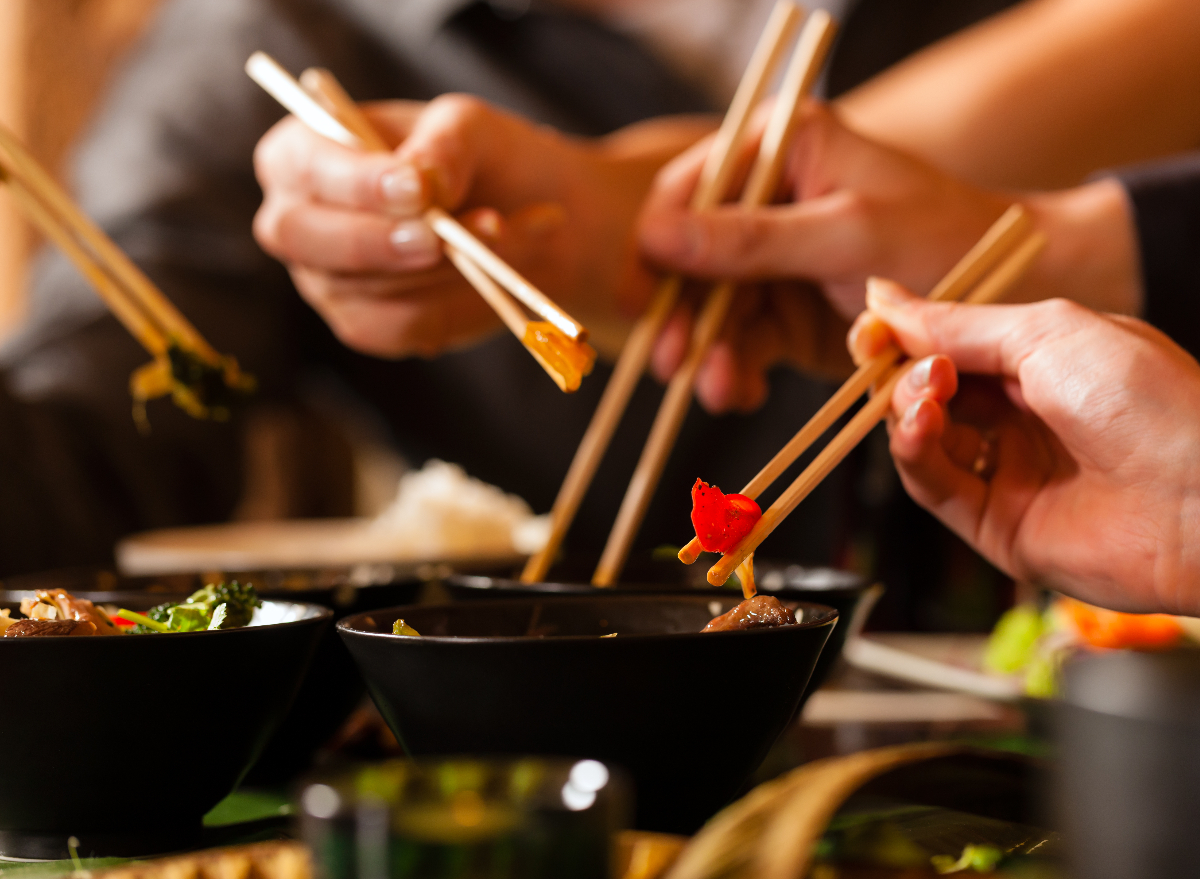The #1 Order to Never Make at a Thai Restaurant, According to Chefs

When it comes to cooking, more often than not, less is more. That's the ethos behind many cuisines, especially those particularly prone to Americanization and bastardization. And just like Chinese and Mexican, Thai is one such cuisine.
In Thailand, the less-is-more approach permeates cooking. In America, however, Thai restaurants too often get bogged down with excess to appease the more-is-more norm of American expectations. Many Thai restaurants in the U.S. eschew accuracy for ingredients not typically found in real-deal Thai kitchens, along with dishes from other cultures that have no business mingling on the same menu (like Thai restaurants that throw in some sushi or Chinese food.)
When it comes to experiencing a more legitimate, soulful taste of Thai cooking, chefs suggest keeping it simple, keeping it authentic, and ultimately saying no to dishes that would be more at home in a Chinese-American restaurant.
"Less is more on a menu," says Dan Coughlin, the chef at Le Thai in Las Vegas. "I grew up in my mom's Thai restaurant, and at most Thai restaurants, their menus are humungous. I'm a little more 'new generation.' If I don't know how to cook a dish, I don't want to put it on the menu. I'm wasting my time and the customer's time."
While he actually has a love for the much-maligned Pad Thai, a dish that tends to get a lot of flack when it's oversaturated with ingredients, Coughlin's main taboo on such bloated menus is Chinese food—a sure sign of inauthenticity.
"Any Thai restaurant that still has Chinese dishes on the menu, avoid. There are some that still do that because they think they have to. My mom told me when she had a restaurant in the '80s, no one knew what Thai food was, so you had to put a kung pao or orange chicken on the menu to get people in the door. It's 2022 now, so a Thai restaurant should just have Thai food, and a Chinese restaurant should have Chinese food."
Instead, stick to the simple Thai classics, like Le Thai's pork jerky, or a dish that Coughlin refers to as "awesome flat noodles" with bean sprouts, green onion, egg, and garlic stir-fry sauce. "Less is more. Keep the menus small and tight, and it's a win for everybody."
Just as inauthentic and out of place as kung pao chicken are items like cheese rolls, crab rangoon, and egg rolls.
"The number one order to never make at a Thai restaurant is a cheese roll," proclaims Lukkaew Srasrisuwan, owner of Kin Dee in Houston. Why? Because cheese is not part of an authentic Thai diet. "Thai food is about balancing the different flavors from meats, veggies, and herbs to create fresh—and sometimes fiery—dishes," she says. "Cheese represents a Western influence that fails to authentically represent Thailand's cuisine."
As a fan of legit Thai food, chef Chad Johnson of Tampa's Bern's Steak House heeds that advise and echoes those sentiments. "Don't waste your calories on the ubiquitous egg roll, crab rangoon, or steamed edamame," he notes. "They're more than likely just on the menu to appease clients who don't know what to order. If you need to have something as an appetizer or first course, branch out and order larb or nam sod."
In terms of what you should order at a Thai restaurant, Chef Fern and Chef Pla of Luv2eat Thai Bistro in Los Angeles know a thing or two. Originally from Phuket, Thailand, the duo cook up a menu that's as close to Thailand as you can get on this side of the Pacific.
Rather than bog down the menu with over-wrought Americanized fare, they prioritize the kinds of foods they grew up eating, like som tum pla ra. "It is papaya salad with a special fermented fish sauce that Thais call Pla Ra, but Laos call Padek," explain the chefs. "The color is darker than regular fish sauce, and it is very interesting but it has very strong scent. Many think it has a very unpleasant smell and a strong fishy flavor, but a very unique taste."
When in Rome, do as the Romans do. Or in this case, when in a Thai restaurant, don't shy away from the funky fish sauce.









